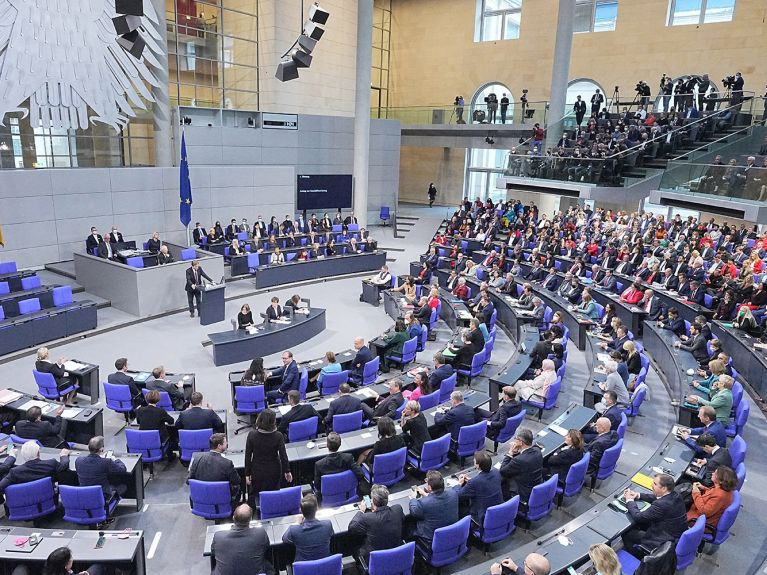First ever three-party alliance
For the first time, Germany will be governed by a coalition of SDP, Greens and FDP – a sign of a changed party political landscape.

Though coalition governments tend to be the norm in Germany, federal governments in the past have generally comprised just two partners. Now the SPD, Greens and FDP will be forming a three-way alliance. This also reveals how the German party political landscape has changed. Find out more about the governments Germany has seen since 1949 and why three-party coalitions like the one that emerged following the Bundestag elections on 26 September 2021 could become the rule.
The classic coalition of one big and one small partner
The two conventional main parties in Germany are the CDU (Christian Democratic Union of Germany) and the SPD (Social Democratic Party of Germany). Since 1949, one of the two has always provided the federal chancellor. In the Bundestag, the country’s parliament, the CDU forms one parliamentary group together with its sister party, the CSU (Christian Social Union), which only runs for election in Bavaria – together, the CDU and CSU are simply known as “the Union”. In the past, one of the two main parties has tended to form a government with one smaller coalition partner: the Union and the SPD have both formed federal governments with the FDP (Free Democratic Party) – as was the case under CDU Chancellor Helmut Kohl or SPD Chancellor Willy Brandt. When Gerhard Schröder was in office (1998–2005), the SPD also governed together with the Greens.
Grand coalitions comprising the Union and the SPD
During her 16 years in office, Federal Chancellor Angela Merkel spent twelve years at the helm of a government comprising the Union and the SPD. Though it looked for a time after the 2017 Bundestag elections as if a government could be formed between CDU/CSU and the Greens and FDP, the FDP broke off talks aimed at a possible collaboration. Consequently, the Union and the SPD once again formed a “grand coalition”.
New coalition models involving three partners
After the Bundestag elections in September 2021, it quickly became clear that a three-way alliance was the most likely outcome this time: because the SPD won the most seats in the Bundestag, many initially talked of a coalition between the Social Democrats and the Greens and FDP. At first, the Union also attempted to woo the two smaller parties. However, around two months after the election it was clear that the SPD, Greens and FDP wanted to form a government, with the Social Democrat Olaf Scholz as Germany’s new chancellor.
The changed party landscape is the reason why three partners will be governing jointly in future. While only three parliamentary groups were sometimes represented in the Bundestag in the past, there are now six: alongside the governing groups of the SPD, Greens and FDP, there are also the parliamentary groups of the CDU/CSU, The Left and the right-wing populist AfD. All the other parties ruled out any coalition with the AfD. Because the CDU and the SPD have often received fewer votes in elections in recent years, Germany may well see more three-way coalitions in the future.


